The sequence of amino acids in a gene determines
the primary structure of a codon
the primary structure of a protein
the primary structure of a nucleotide
the primary structure of a nucleic acid.
Correct Answer : B
The sequence of amino acids in a gene determines the primary structure of a protein. The components necessary for translation are located in the cytoplasm. Translation is the making of proteins by mRNA binding to a ribosome with the start codon that initiates the production of amino acids. A peptide bond forms and connects the amino acids together. The sequence of amino acids determines the protein’s structure, which determines its function.
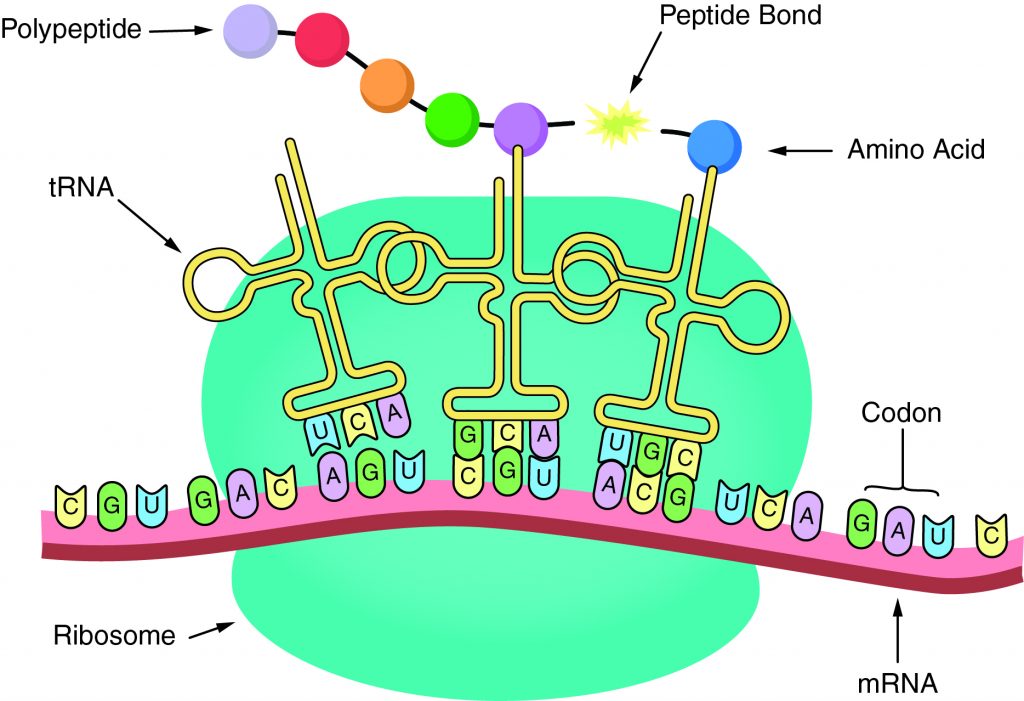
TEAS 7 Exam Quiz Bank
HESI A2 Exam Quiz Bank
Find More Questions 📚
Teas 7 Questions: We got the latest updated TEAS 7 questions
100% Money Refund: 100% money back guarantee if you take our full
assessment pass with 80% and fail the actual exam.
Live Tutoring: Fully customized live tutoring lessons.
Guaranteed A Grade: All students who use our services pass with 90%
guarantee.
Related Questions
Correct Answer is D
Explanation
In this reaction, two elements are trading places hence double-replacement. In the reactants, zinc and bromide ions are together, and potassium and hydroxide ions are together. In the products, zinc and hydroxide ions are together, and potassium and bromide ions are together.
Correct Answer is B
Explanation
The number of protons, 28, gives the atomic number, which identifies this atom as nickel. The mass is the number after the dash in the isotope name, which is determined by adding the numbers of protons and neutrons (28 + 32 = 60).
Correct Answer is D
Explanation
The primary function of the respiratory system is to provide oxygen to and remove carbon dioxide from the body. In addition to gas exchange, the respiratory system enables a person to breathe. Breathing, or inhalation, is essential to life. It is the mechanism that provides oxygen to the body. Without oxygen, cells are unable to perform their functions necessary to keep the body alive. The primary muscle of inspiration is the diaphragm. Known as the chest cavity, this dome shaped structure flattens when it contracts. The rib cage moves outward, allowing outside air to be drawn into the lungs. During relaxation, the diaphragm returns to its dome shape and the rib cage moves back to its natural position. This causes the chest cavity to push air out of the lungs.
The respiratory system can be functionally divided into two parts:
- Air-conducting portion: Air is delivered to the lungs. This region consists of the upper and lower respiratory tract—specifically, the larynx, trachea, bronchi, and bronchioles.
- Gas exchange portion: Gas exchange takes place between the air and the blood. This portion includes the lungs, alveoli, and capillaries.
Correct Answer is A
Explanation
The main male reproductive organs are thepenisand thetesticles, which are located external to the body. The penis is composed of a long shaft and a bulbous end called the glans penis. The glans penis is usually surrounded by an extension of skin called the foreskin.
Thetestes(analogous to the female ovaries), or testicles, are retained in a pouch of skin called thescrotum, which descends from the base of the penis. The scrotum contains nerves and blood vessels needed to support the testicles’ functions. Each testicle (or testis) produces sperm (analogous to the female ova), which are passed into a series of coiled tubules called theepididymis. The epididymis stores and nurtures sperm until they are passed into thevas deferens, a tubule that is about 30 centimeters long, extending from the testicle into the pelvis and ending at the ejaculatory duct.
The epididymis and vas deferens are supported by several accessory glands (the seminal vesicles, the prostate gland, and the Cowper glands) that produce fluid components of semen and support the sperm cells.
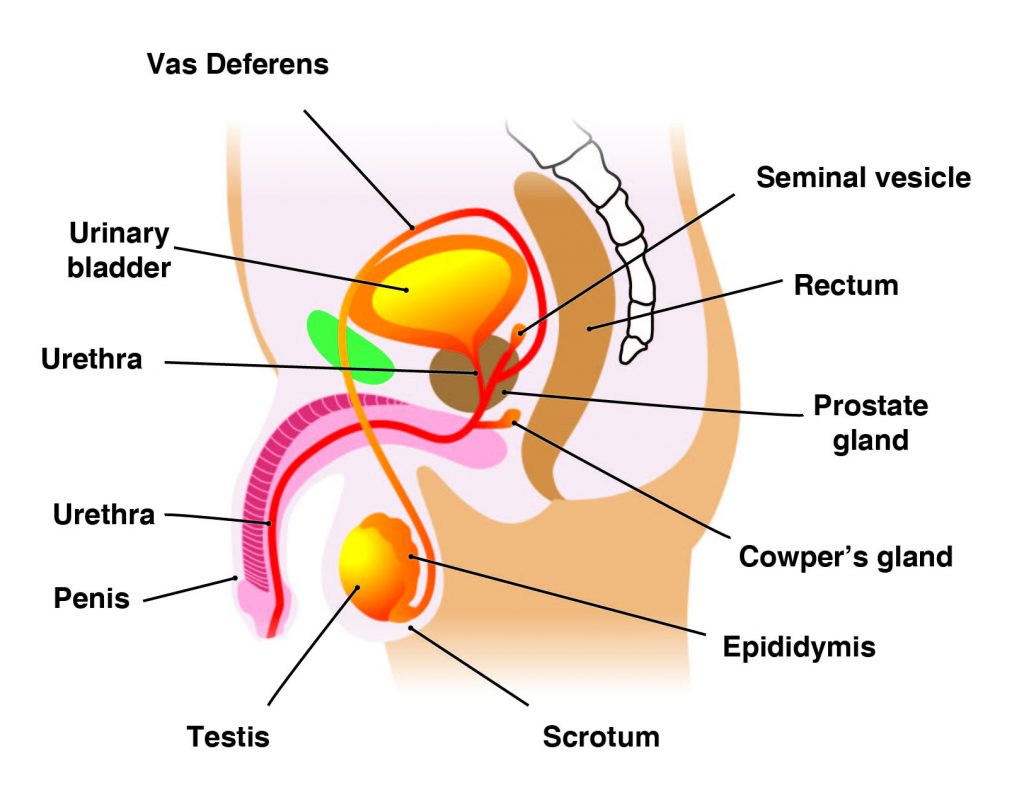
Correct Answer is C
Explanation
Unlike condensation, deposition, and melting, evaporation is dependent not only on the temperature, but also on the amount of a substance available.
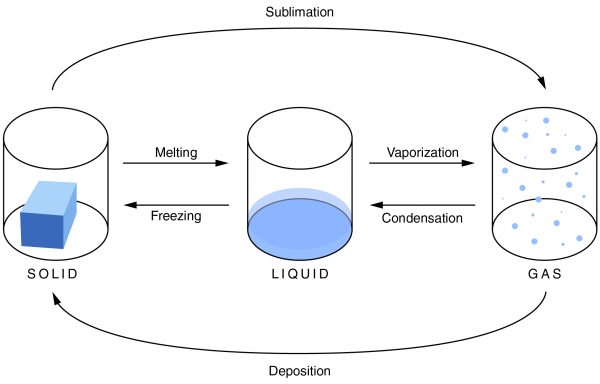
Condensationis the change of a gas or vapor to a liquid. A change in the pressure and the temperature of a substance causes this change. The condensation point is the same as the boiling point of a substance. It is most noticeable when there is a large temperature difference between an object and the atmosphere. Condensation is also the opposite of evaporation.
Evaporationis the change of a liquid to a gas on the surface of a substance. This is not to be confused with boiling, which is a phase transition of an entire substance from a liquid to a gas. The evaporation point is the same as the freezing point of a substance. As the temperature increases, the rate of evaporation also increases. Evaporation depends not only on the temperature, but also on the amount of substance available.
Freezingis the change of a liquid to a solid. It occurs when the temperature drops below the freezing point. The amount of heat that has been removed from the substance allows the particles of the substance to draw closer together, and the material changes from a liquid to a solid. It is the opposite of melting.
Meltingis the change of a solid into a liquid. For melting to occur, enough heat must be added to the substance. When this is done, the molecules move around more, and the particles are unable to hold together as tightly as they can in a solid. They break apart, and the solid becomes a liquid.
Sublimationis a solid changing into a gas. As a material sublimates, it does not pass through the liquid state. An example of sublimation is carbon dioxide, a gas, changing into dry ice, a solid. It is the reverse of deposition.
Depositionis a gas changing into a solid without going through the liquid phase. It is an uncommon phase change. An example is when it is extremely cold outside and the cold air comes in contact with a window. Ice will form on the window without going through the liquid state.
Correct Answer is D
Explanation
The duodenum is the first part of the small intestines, located between the stomach and the middle part of the small intestines (jejunum). Once food has mixed with acid in the stomach, it moves into the duodenum, where it then mixes with bile from the gallbladder and digestive juices secreted from the pancreas. In the duodenum, absorption of vitamins, minerals, and nutrients begins.
Correct Answer is A
Explanation
Atissueis a group of cells with similar structure and function and similar extracellular substances located between the cells. The table below describes the four primary tissues found in the human body.
body.
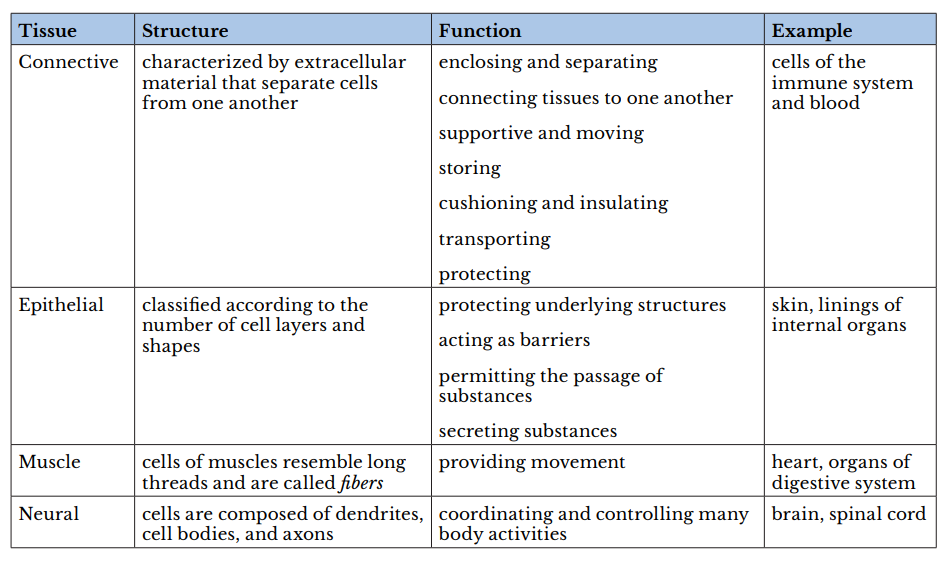
Correct Answer is D
Explanation
Mendel developed theories of genetics that scientists around the world use today.
From experiments with garden peas, Mendel developed a simple set of rules that accurately predicted patterns of heredity. He discovered that plants eitherself-pollinateorcross-pollinate, when the pollen from one plant fertilizes the pistil of another plant. He also discovered that traits are eitherdominantorrecessive. Dominant traits are expressed, and recessive traits are hidden.
Mendel’s Theory of Heredity
To explain his results, Mendel proposed a theory that has become the foundation of the science of genetics. The theory has five elements:
- Parents do not transmit traits directly to their offspring. Rather, they pass on units of information calledgenes.
- For each trait, an individual has two factors: one from each parent. If the two factors have the same information, the individual ishomozygousfor that trait. If the two factors are different, the individual isheterozygousfor that trait. Each copy of a factor, orgene, is called anallele.
- The alleles determine the physical appearance, orphenotype. The set of alleles an individual has is itsgenotype.
- An individual receives one allele from each parent.
- The presence of an allele does not guarantee that the trait will be expressed.
Correct Answer is D
Explanation
The cardiovascular system is closely associated with hematopoiesis because it includes the heart and blood vessels, which are responsible for circulating blood throughout the body. Hematopoiesis, the process of blood cell formation, primarily occurs in the bone marrow, which is part of the skeletal system. However, the cardiovascular system plays a crucial role in transporting these blood cells to various parts of the body once they are produced in the bone marrow.
So, while the skeletal system provides the site for hematopoiesis, the cardiovascular system is responsible for distributing the blood cells, making it the most closely associated system in this context.
Correct Answer is A
Explanation
Taxonomy is the process of classifying, describing, and naming organisms. There are seven levels in the Linnaean taxonomic system, starting with the broadest level, kingdom, and ending with the species level. For example, in the image the genus level contains two types of bears, but the species level shows one type. Additionally,organisms in each level are found in the level above it. For example, organisms in the order level are part of the class level. This classification system is based on physical similarities across living things. It does not account for molecular or genetic similarities.
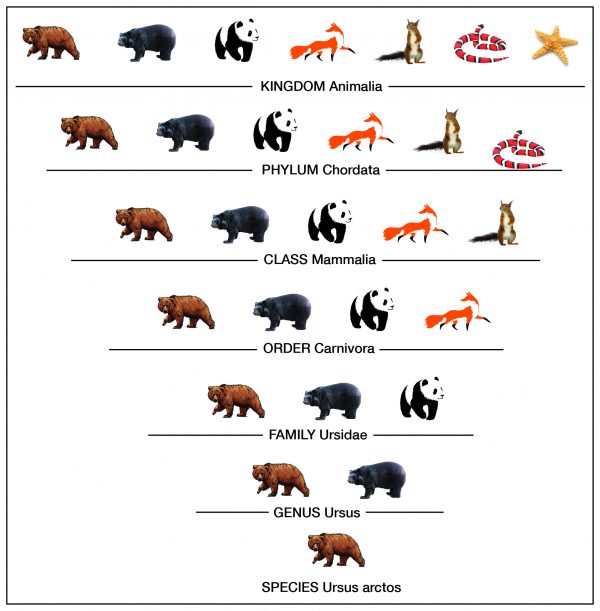
This question was extracted from the actual TEAS Exam. Ace your TEAS exam with the actual TEAS 7 questions, Start your journey with us today
Visit Naxlex, the Most Trusted TEAS TEST Platform With Guaranteed Pass of 90%.
Money back guarantee if you use our service and fail the actual exam. Option of personalised live tutor on your area of weakness.
